For our most recent trip to Italy, we were looking to explore a new-to-us region that would allow us to escape Italy’s summer tourist crowds and be a bit more off the beaten track. We honed in on Puglia, the “heel of the boot” of Italy. Known for its scenic rural landscape, historic towns, and great food and wine, it had all the ingredients for a vacation we would love.
 We focused our trip on the Valle d’Itria and its historic hilltop towns. Southeast of Bari, the region isn’t a true valley as the name implies, but rather a plateau with rivers and streams forming small valleys between the hilltop towns. It’s a beautiful landscape filled with grape vines, olive and fig trees, and distinctive stone trulli buildings. Every meal we ate was delicious, highlighting fresh and local ingredients. Like many trips to Italy, the food was a true highlight.
We focused our trip on the Valle d’Itria and its historic hilltop towns. Southeast of Bari, the region isn’t a true valley as the name implies, but rather a plateau with rivers and streams forming small valleys between the hilltop towns. It’s a beautiful landscape filled with grape vines, olive and fig trees, and distinctive stone trulli buildings. Every meal we ate was delicious, highlighting fresh and local ingredients. Like many trips to Italy, the food was a true highlight.
We spent our days exploring the different hilltop towns in the region. Each of the towns has a core centro storico (historic center) surrounded by more modern (and in many cases unattractive) buildings filled with apartments, shops, and restaurants. The attraction of these towns really is in visiting the centro storico and exploring the alleyways, churches, and piazzas.
It is worth noting that the Puglian towns follow a daily rhythm similar to other areas in the Mediterranean. Shops and even tourist attractions typically close for several hours in the afternoon, before reopening for late afternoon and/or evening hours. Most restaurants open for dinner around 8 p.m., and it is common for locals to take a pre or post-dinner passeggiata (stroll around town). Towns are fairly quiet in the afternoons, but really come to life again in the evenings.
We had a chance to explore six distinctive towns in the Valle d’Itria:
Locorotondo




Designated as a borgo più bello d’Italia, one of the most beautiful towns in Italy, Locorotondo is a whitewashed hilltop town. Centrally located between many of the other towns we hoped to visit, we made Locorotondo our base for our time in the Valle d’Itria. Locorotondo was one of the most attractive towns we visited—buildings are all white and even the streets are paved with white stones. The old city radiates out around the 19th century neoclassical Chiesa Madre San Giorgio, a church dedicated to the patron saint of the city. At the edge of the centro storico is the oldest church in the city, Chiesa Madonna della Greca, a 15th century church with a unique stone carved rose window. Since Locorotondo is perched on a hill, you can get great views of the surrounding countryside from the Villa Comunale, the public garden located on the west side of the centro storico.
We had several excellent meals in Locorotondo. We agreed one of the best meals of the trip was at Bina Ristorante di Puglia, a restaurant in a historic 18th century building just outside the old city specializing in local Pugliese cuisine. In the centro storico we had another great Pugliese meal at Ristorante U Curdunn, a restaurant with lots of outdoor seating in one of Locorotondo’s beautiful alleyways. The only pizza we had on the trip (and it was excellent) was at Pizzeria Casa Pinto, a popular place on one of Locorotondo’s main pedestrian streets.
Alberobello
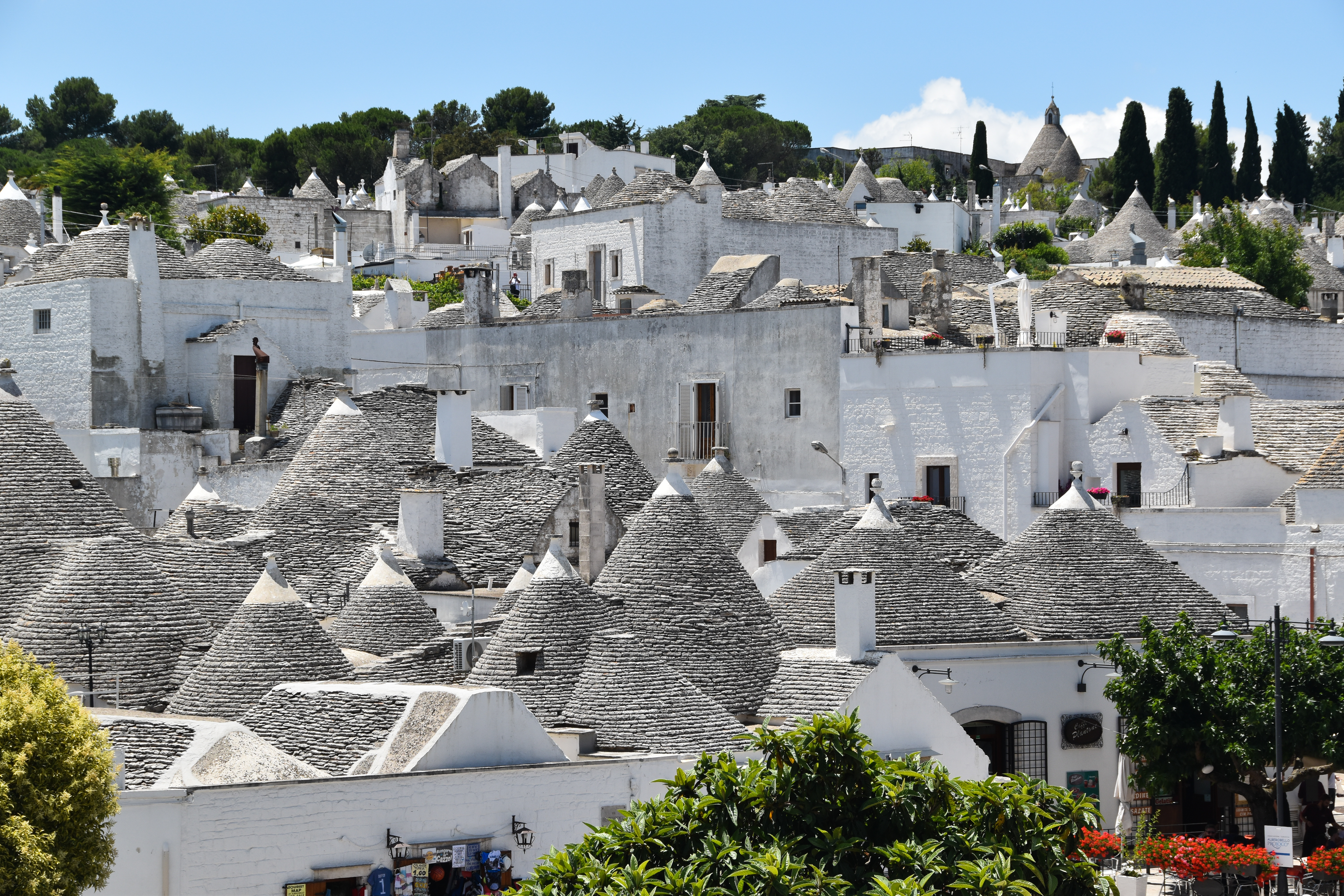 Alberobello is the best known town in the region, and for good reason. A UNESCO World Heritage Site, Alberobello has over 1,500 densely packed trulli—circular stone buildings with conical tops that are built without mortar. These buildings are unique to the Valle d’Itria and were originally built as field shelters or for storage, and in some cases as dwellings for rural families. Since trulli are generally found dotting the countryside and never in such a large concentration, Alberobello certainly makes for an unusual sight.
Alberobello is the best known town in the region, and for good reason. A UNESCO World Heritage Site, Alberobello has over 1,500 densely packed trulli—circular stone buildings with conical tops that are built without mortar. These buildings are unique to the Valle d’Itria and were originally built as field shelters or for storage, and in some cases as dwellings for rural families. Since trulli are generally found dotting the countryside and never in such a large concentration, Alberobello certainly makes for an unusual sight.
 The majority of the trulli are clustered in two neighborhoods—over 1,000 are in Rione Monti and another 400 are in Rione Aia Piccola. The two neighborhoods are very different from one another in that commercial activities such as restaurants and souvenir shops are allowed in Rione Monti, while Rione Aia Piccola remains much quieter and primarily residential.
The majority of the trulli are clustered in two neighborhoods—over 1,000 are in Rione Monti and another 400 are in Rione Aia Piccola. The two neighborhoods are very different from one another in that commercial activities such as restaurants and souvenir shops are allowed in Rione Monti, while Rione Aia Piccola remains much quieter and primarily residential.
There are two excellent museums in Alberobello that provide a better understanding of the trulli. In Rione Aia Piccola, the Museo del Territorio consists of several interconnected trulli, formerly belonging to the personal doctor to a local Count, and provides information on the history and construction of the structures, as well as background on Alberobello as a settlement. Trullo Sovrano, is a smaller museum located in the only two story trullo. Built in the 18th century for the local priest, the central dome rises 14 meters, and is surrounded by several interconnected trulli. The museum shows how each space would have been used when the trullo was as a residence and highlights the uniqueness of the structure. We found that both museums were worth visiting as they really complimented each other and gave us a better understanding of the trulli we saw throughout the region.
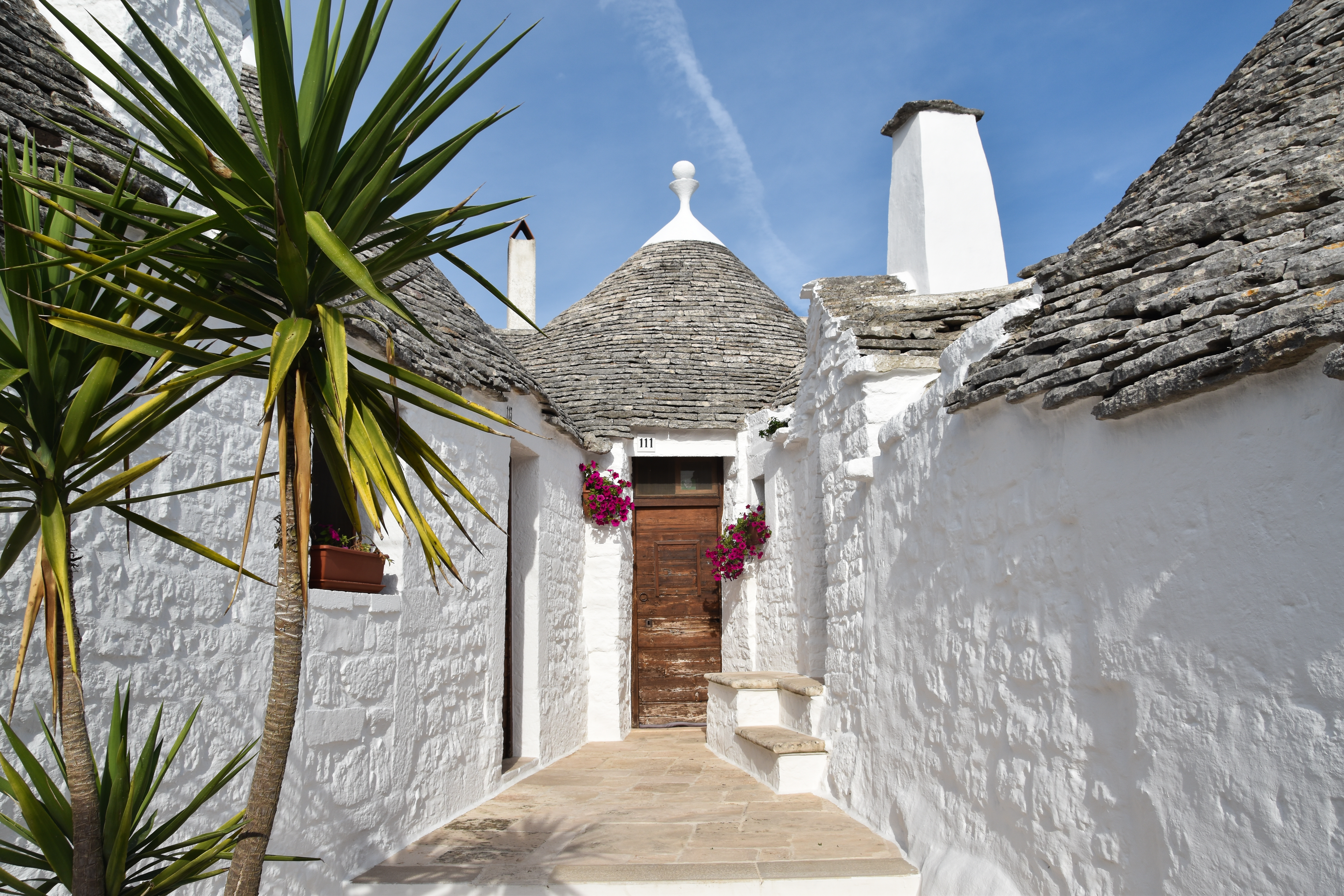

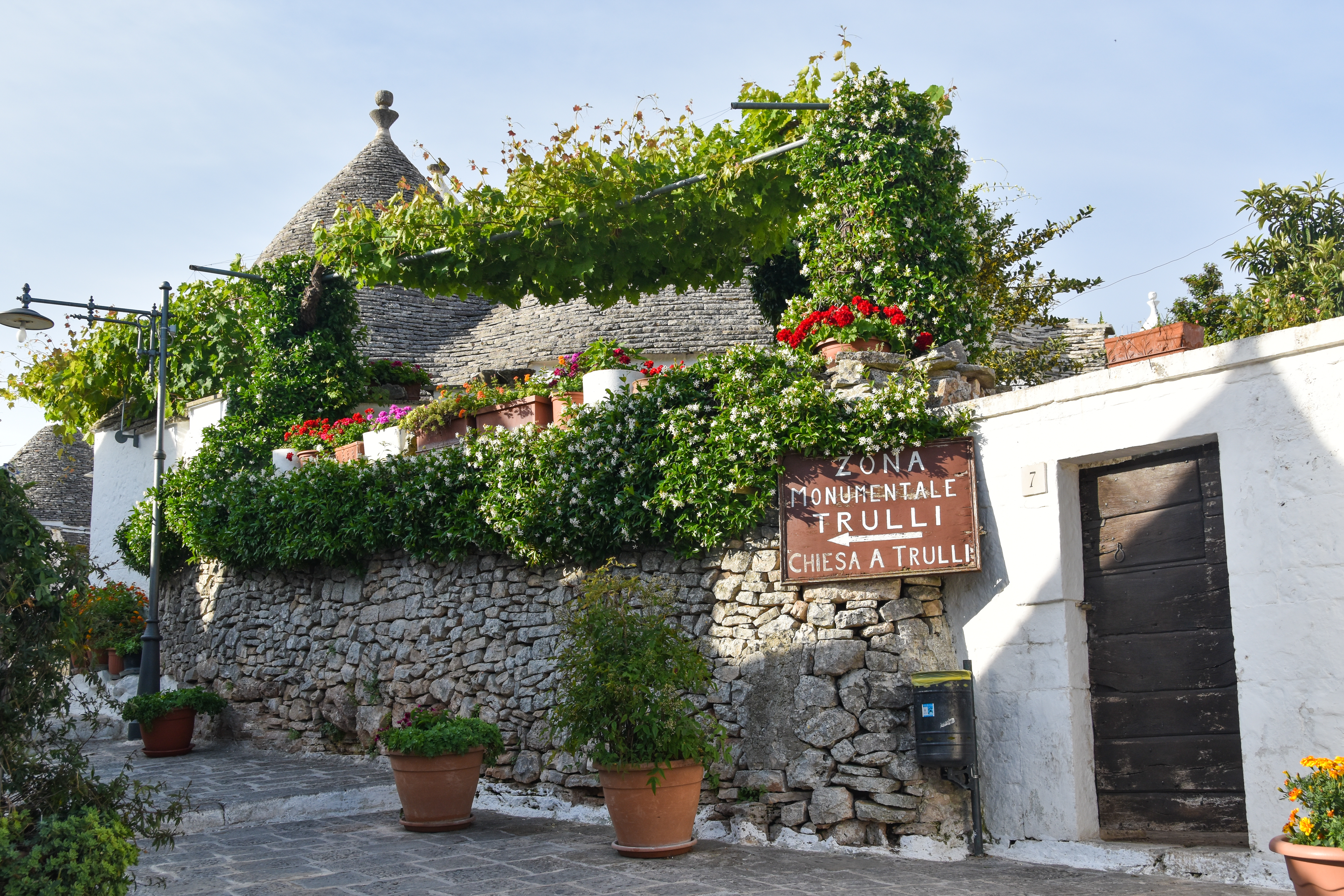
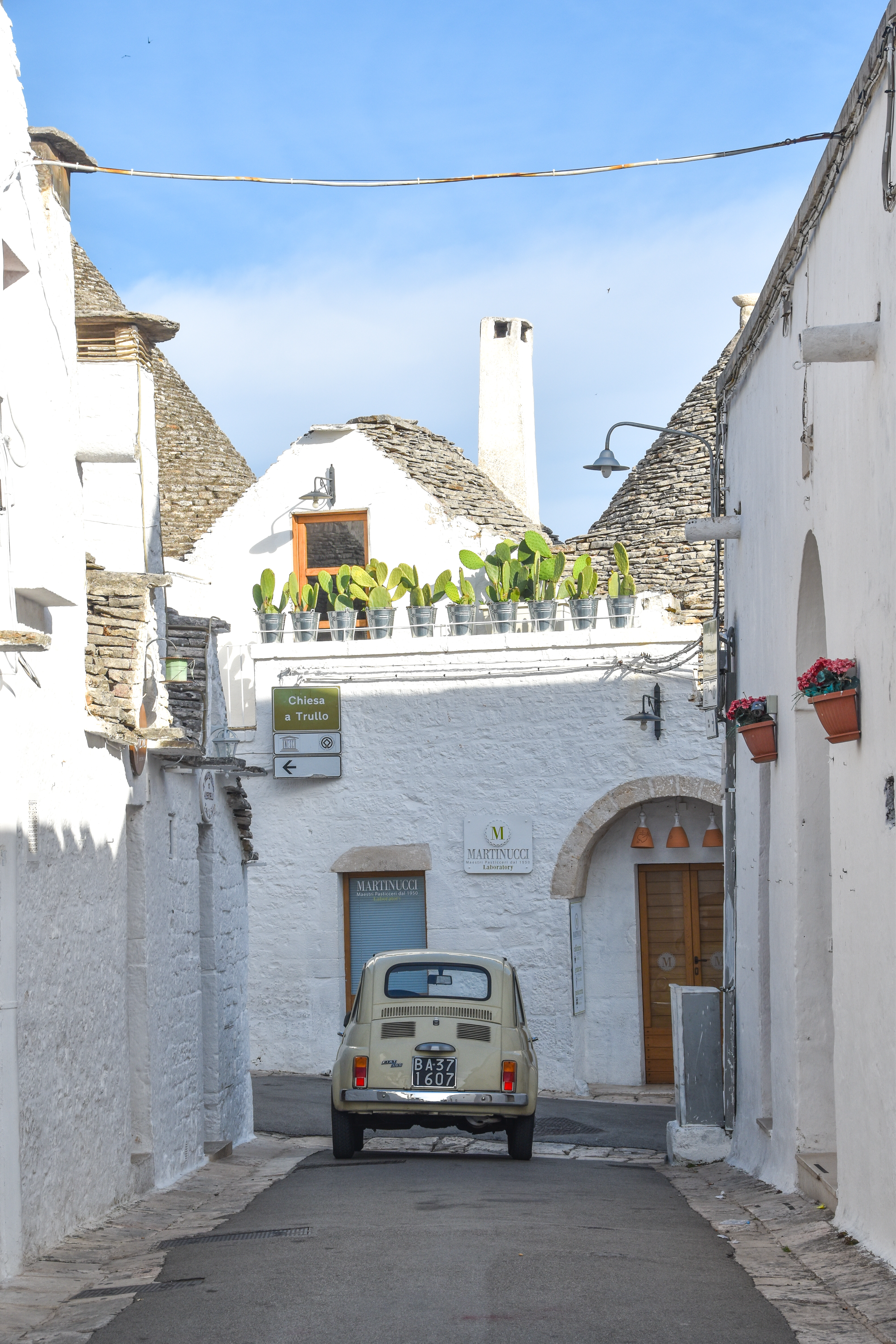


We had been warned that Alberobello would be full of tourists, and we found that was definitely the case from mid-morning through the evening. With that said, the museums were surprisingly quiet, providing a nice respite from the crowds, and we found that more of the visitors tended to wander through Rione Monti where the shops and restaurants are located. We did take the opportunity to arrive at Alberobello before 7:00 a.m. one morning, and found it wonderfully empty. We explored the vacant streets and took it all in before tourists started to arrive after 8:00 a.m.
We found the most amazing breakfast pastries, distinctive to Puglia, at Martinucci Laboratory, a pasticceria (pastry shop) with a location in the Rione Monti. They make several flavors of pasticciotti, a custard-filled pastry in flavors like pistachio and ricotta with chocolate. We also worked hard to find a good authentic restaurant in the town, and enjoyed dinner at L’Aratro, a restaurant that uses a lot of Slow Food products on the menu. We dined in a historic trullo, and they also have a small garden in the back. (Given the high tourist volume in Alberobello, reservations for this particular restaurant seemed necessary.)
Cisternino

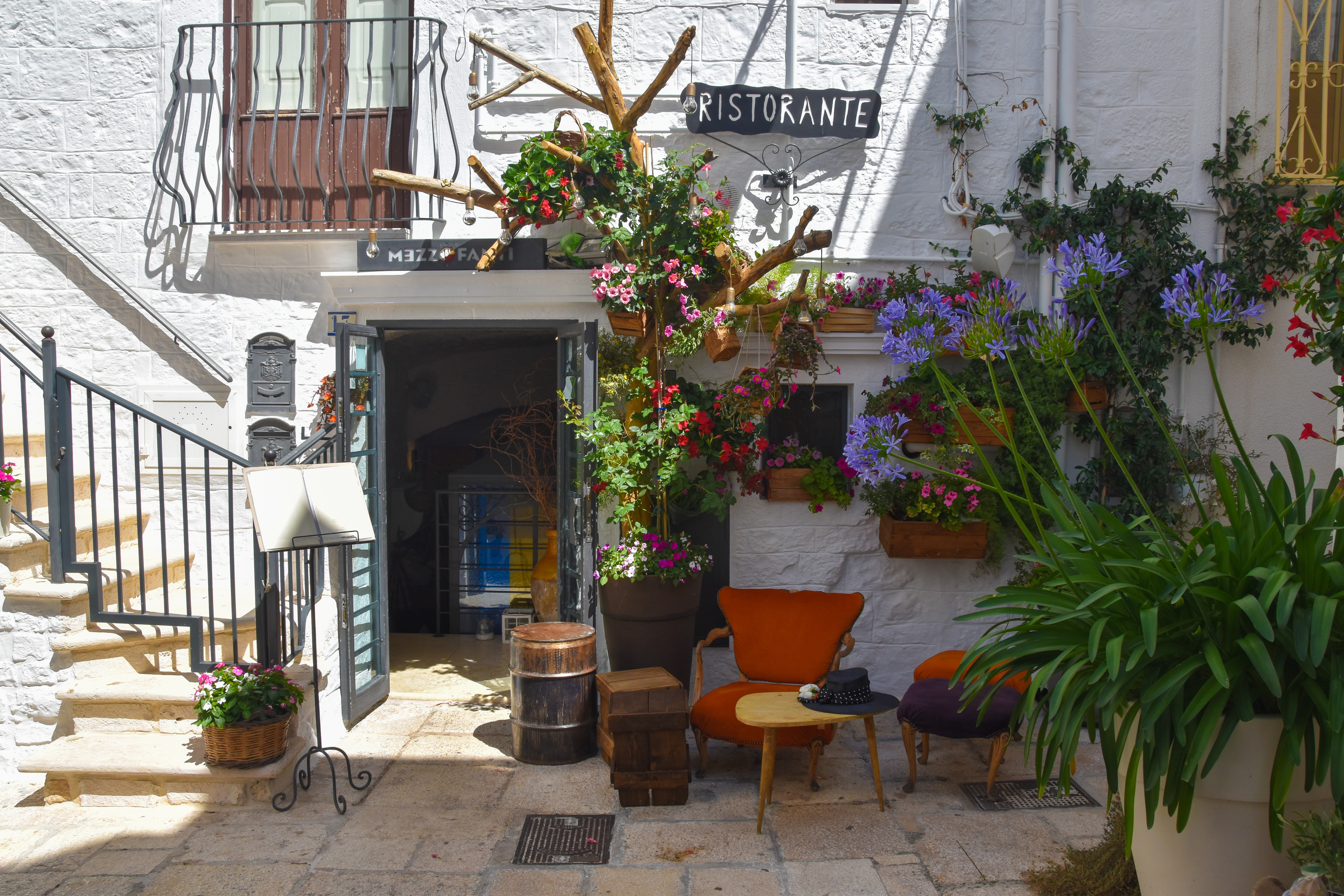
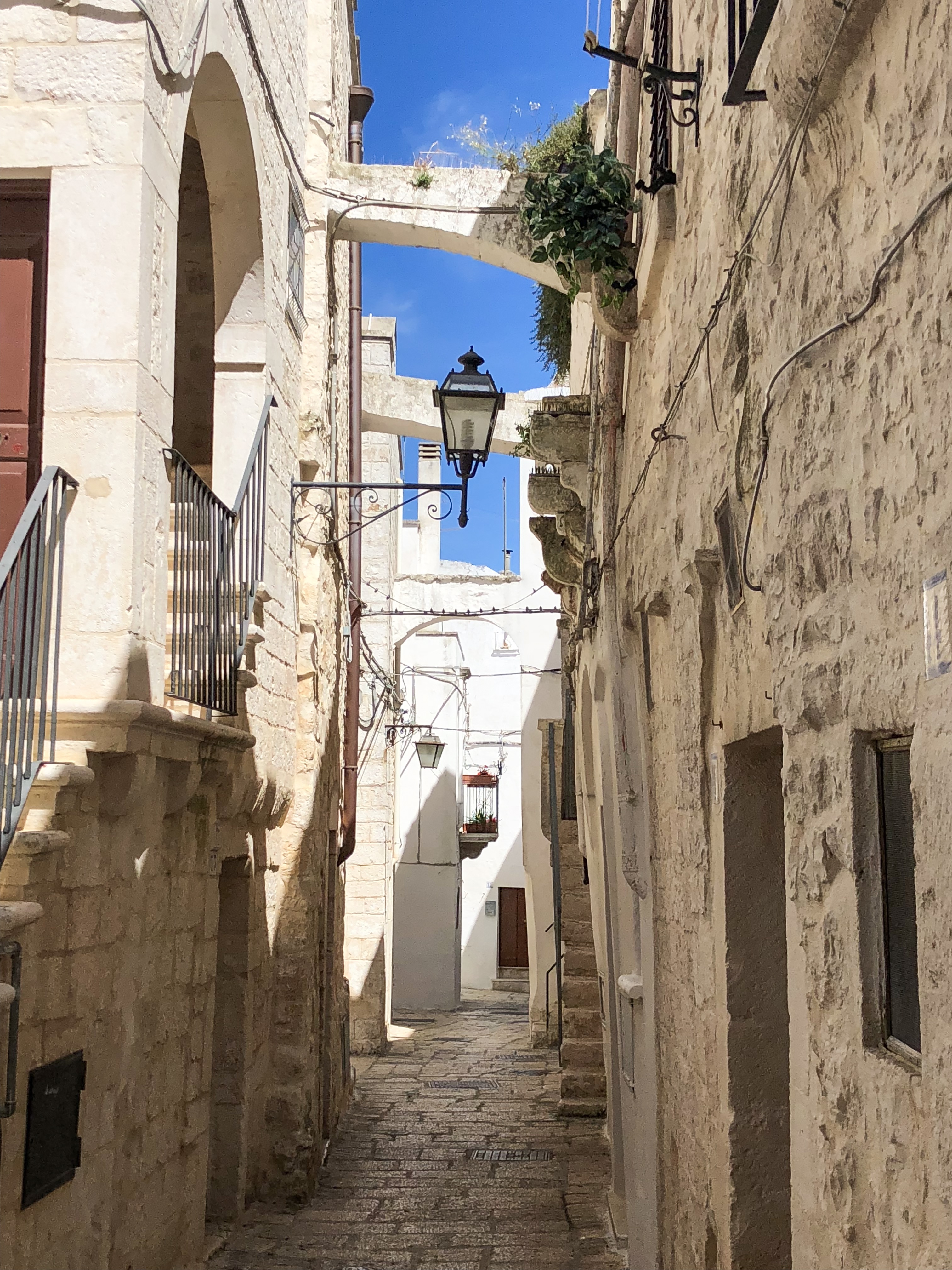
Using Locorotondo as our home base, the town of Cisternino was only a short drive away. Similar to Locorotondo in many ways, it has also been designated as one of the country’s most beautiful cities (borgo più bello d’Italia), and you find lots of small alleyways for wandering in the centro storico. We were unable to visit the historic Chiesa di San Nicola as it was closed the afternoon we were there, but you can get good views of the countryside from Piazza Garibaldi, across the street from the church, and the Torre Civica, the Norman Swabian tower which helped to protect the city, is next to the church as well.
We ate lunch at Ristorante Mezzofanti, tucked away in the corner of Piazza Rossi, in a building that was the former bread oven for the town. On another evening we had dinner at Osteria Bell’Italia, a charming restaurant with lots of outdoor tables winding through the alleyways of the centro storico. Both had excellent Pugliese food options available. We also enjoyed the gelato at Bar FOD, a pasticceria and gelateria with an unassuming entrance located on the ground floor of the city’s clock tower (Torre dell’Orologio).
Martina Franca
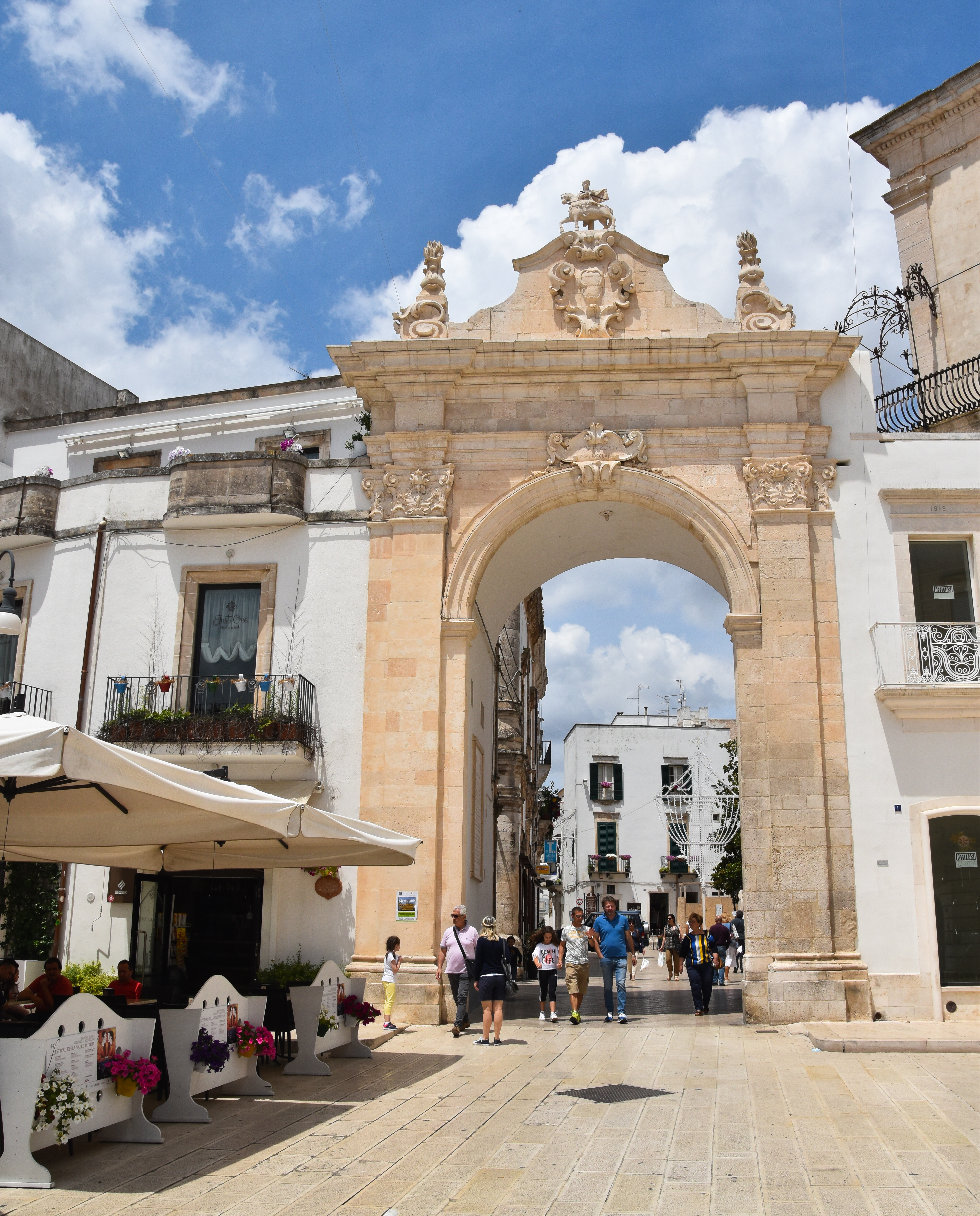

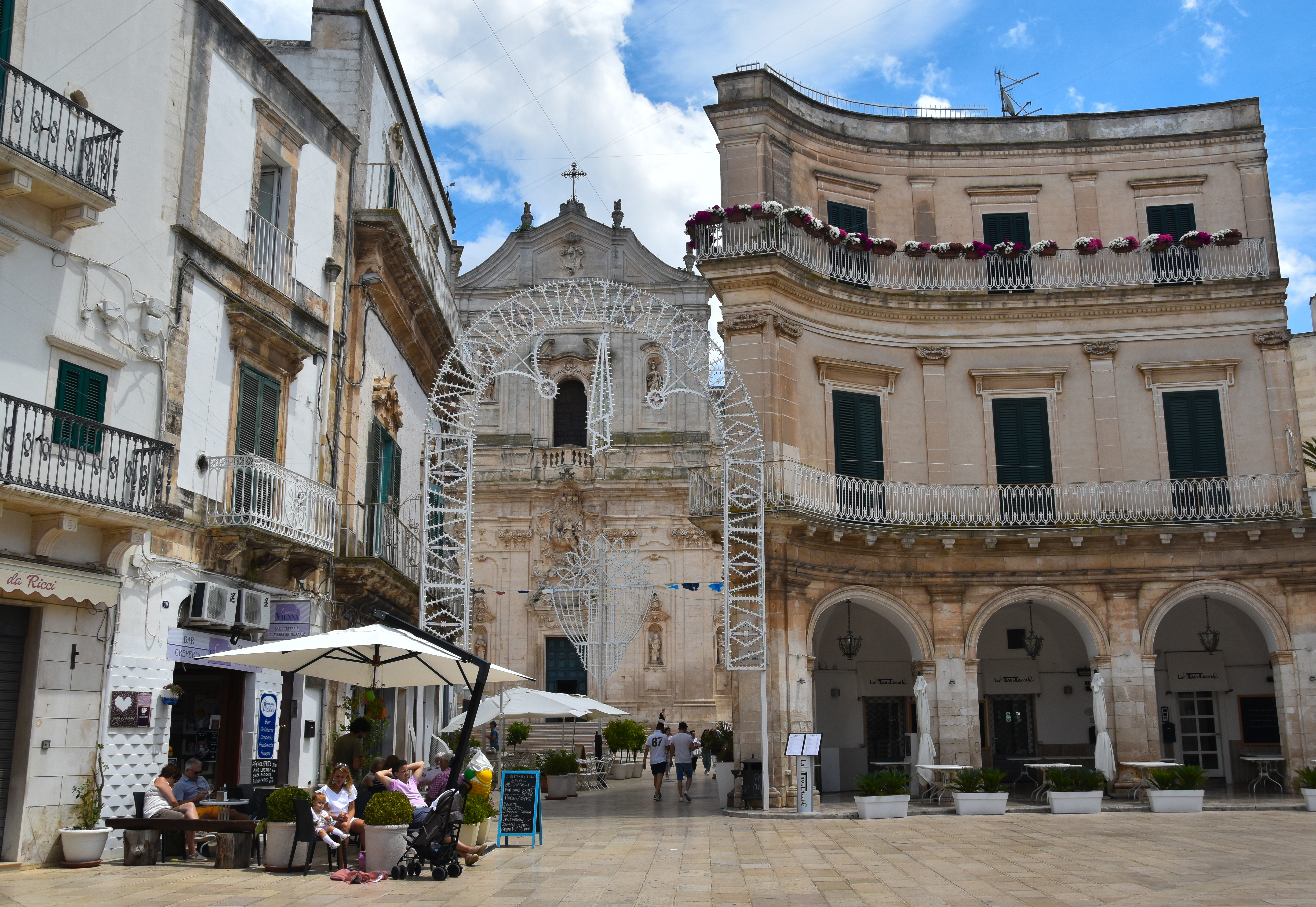
Martina Franca is the highest town by elevation on the Murgia plateau, and until the unification of Italy in 1861 it was a walled city with 24 towers and four gates, evidence of which you can still see today. A bit bigger than the neighboring towns, it has long been the commercial center of the region, which is evident in the numerous palazzi and churches found in the city.
 The largest church in town is Basilica di San Martino, a grand baroque and rococo construction located on the Piazza Plebiscito. Via Vittorio Emanuele continues east from the piazza to one of the city gates, Arco di Sant’Antonio, and the 17th century Palazzo Ducale. Palazzo Ducale has rooms that are free to visit with frescoed walls, and at the time we were there a photography exhibit as well. There was also a more formal art exhibit which had an entrance fee.
The largest church in town is Basilica di San Martino, a grand baroque and rococo construction located on the Piazza Plebiscito. Via Vittorio Emanuele continues east from the piazza to one of the city gates, Arco di Sant’Antonio, and the 17th century Palazzo Ducale. Palazzo Ducale has rooms that are free to visit with frescoed walls, and at the time we were there a photography exhibit as well. There was also a more formal art exhibit which had an entrance fee.
We ate lunch at Osteria del Coco Pazzo, a restaurant on the edge of the centro storico with excellent local cuisine and indoor and outdoor seating.
Noci
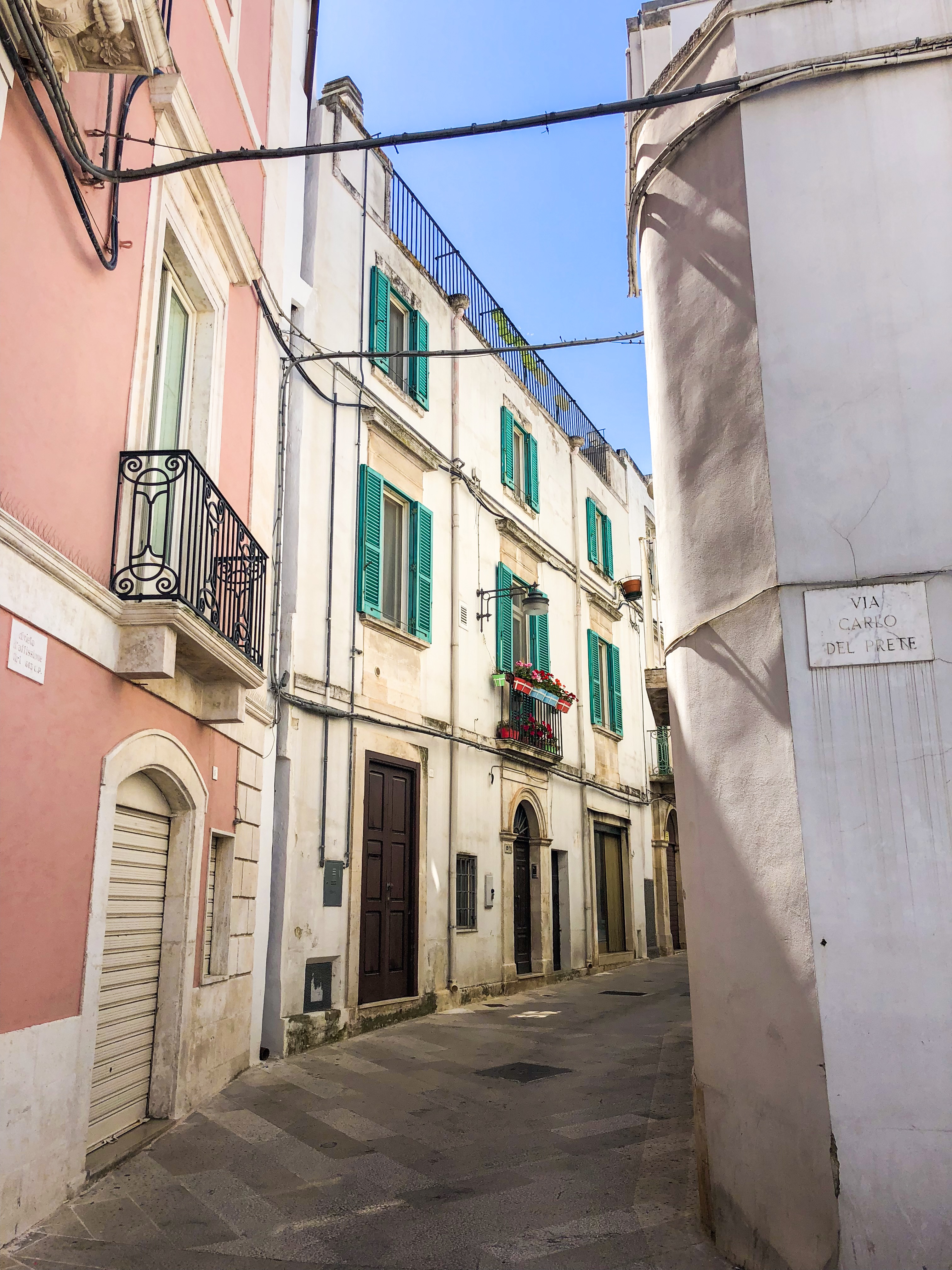
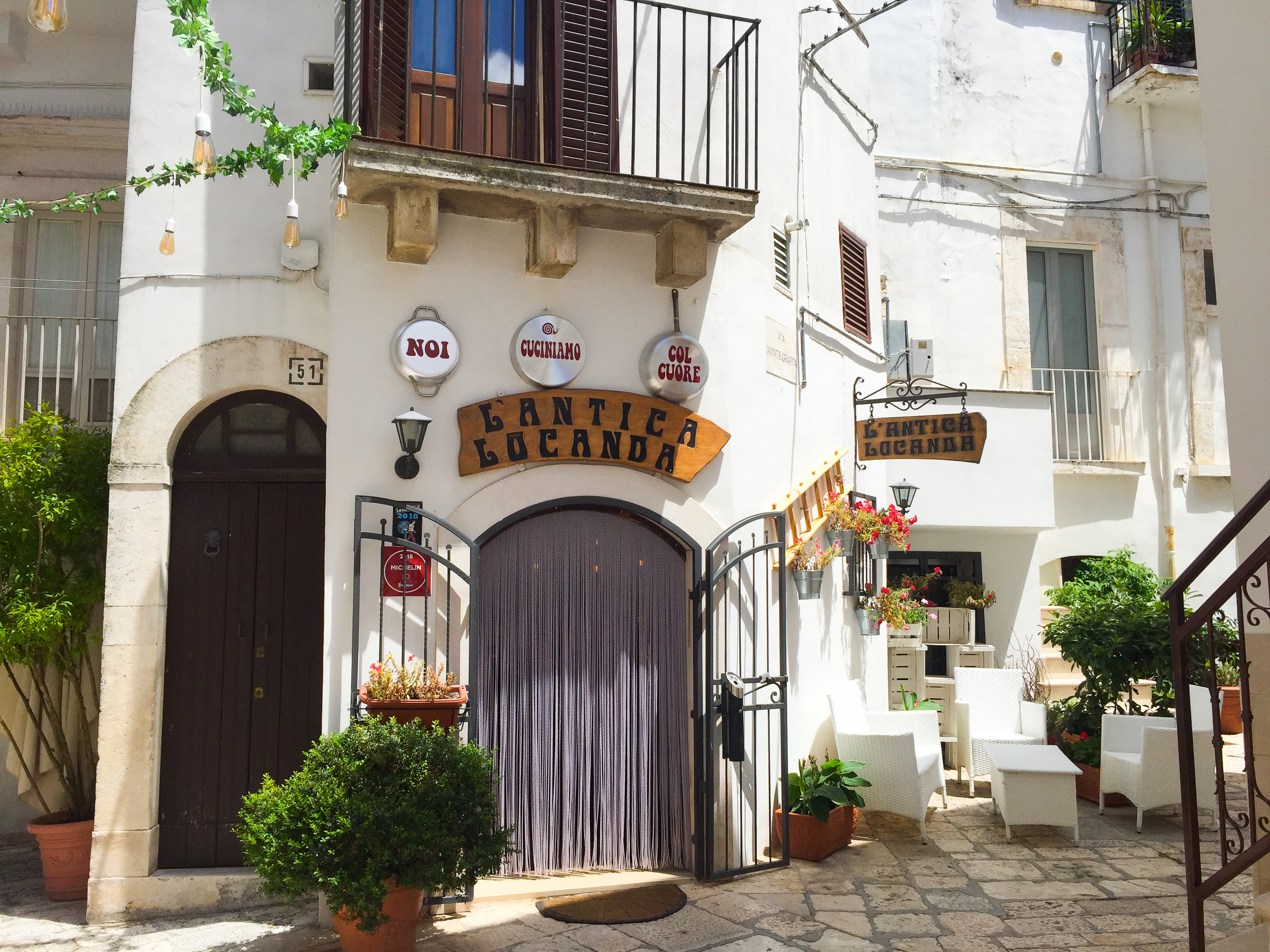

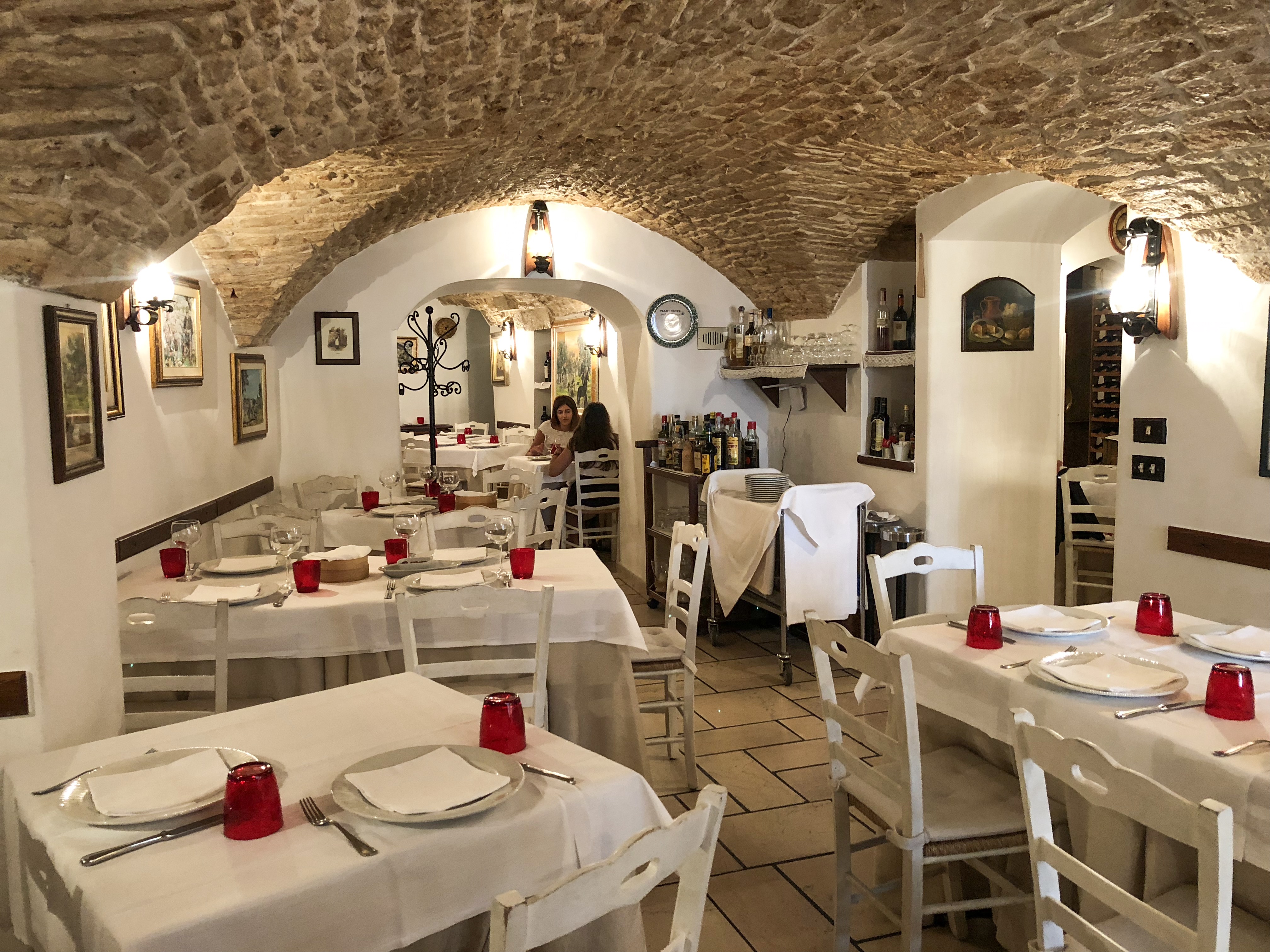

Noci reminded us of what Locorotondo may have been like in the days before discovery by tourists. A small-scale whitewashed town, we made the trip there to eat lunch at L’Antica Locanda, headed by a renowned chef dedicated to preserving the finest of Pugliese cuisine. After a delicious lunch we took a passeggiata through town in the sleepy afternoon hours. The main church, Chiesa di Santa Maria della Natività, was closed but wandering through town gave us a good idea of what life is like in a hilltop town that is still very residential and somewhat untouched by tourists.
Ostuni
Appropriately nicknamed la città bianca or “the white city,” Ostuni’s location just a few kilometers from the Adriatic gives this hilltop city great views of the water that are unique among the towns we visited. Its historic center is located on a steep hill, with the beautiful 15th century co-cathedral of Santa Maria Assunta at the top. The combination of an attractive historic town and proximity to the beach means Ostuni sees more tourists than many other towns in the area, but it still didn’t feel too touristy during our visit. There were plenty of restaurants, cafes, and small hotels that make it feel like it would be a great place to stay. We enjoyed wandering the streets and alleyways, checking out the historic buildings, and enjoying a few panoramic views of the Adriatic.





The Museo Civiltà Preclassica Murgia Meridionale Ostuni, the town’s archaeology museum, was a surprising treat. Housed in a former church and adjoining monastery, the museum features artifacts documenting a mind-blowing 30,000 years of human history in the region. The true highlight is the remains of Ostuni Woman 1, a late Stone Age pregnant woman who was found in a cave near Ostuni. Her bones and those of her unborn child are on display, along with a shell bracelet and other tools and decorations from the tomb. She is believed to have died around 28,000 years ago. While the museum’s displays are only in Italian, the free museum app is worth downloading and provides some explanations in English.
While we didn’t have the chance to eat a meal in Ostuni itself, we enjoyed perhaps the best meal of our entire trip in the nearby village of Speziale. At Trattoria il Cortiletto, an ordinary facade and simple “Trattoria” sign give no hint to the culinary treat that awaits. We enjoyed a leisurely lunch in the shaded back courtyard, featuring spaghetti with salicornia (sea asparagus, or a succulent that grows in salt marshes), fettuccine with zucchini flowers, the tastiest roast chicken with crispy skin you’ll ever find, panna cotta made with ricotta and eggplant, and some complimentary limoncello to finish up. While it seems off the beaten track, word has gotten out about this gem and reservations are a must, especially for dinner.
THE CUISINE OF PUGLIA
With its warm, Mediterranean climate and mix of coastline and hilly farmland, Puglia is blessed with a bounty of local ingredients that make its cuisine some of the best in Italy. Traditional dishes are based on seasonally available produce, meat, or seafood, and the simple recipes highlight and accentuate the flavors of these ingredients.

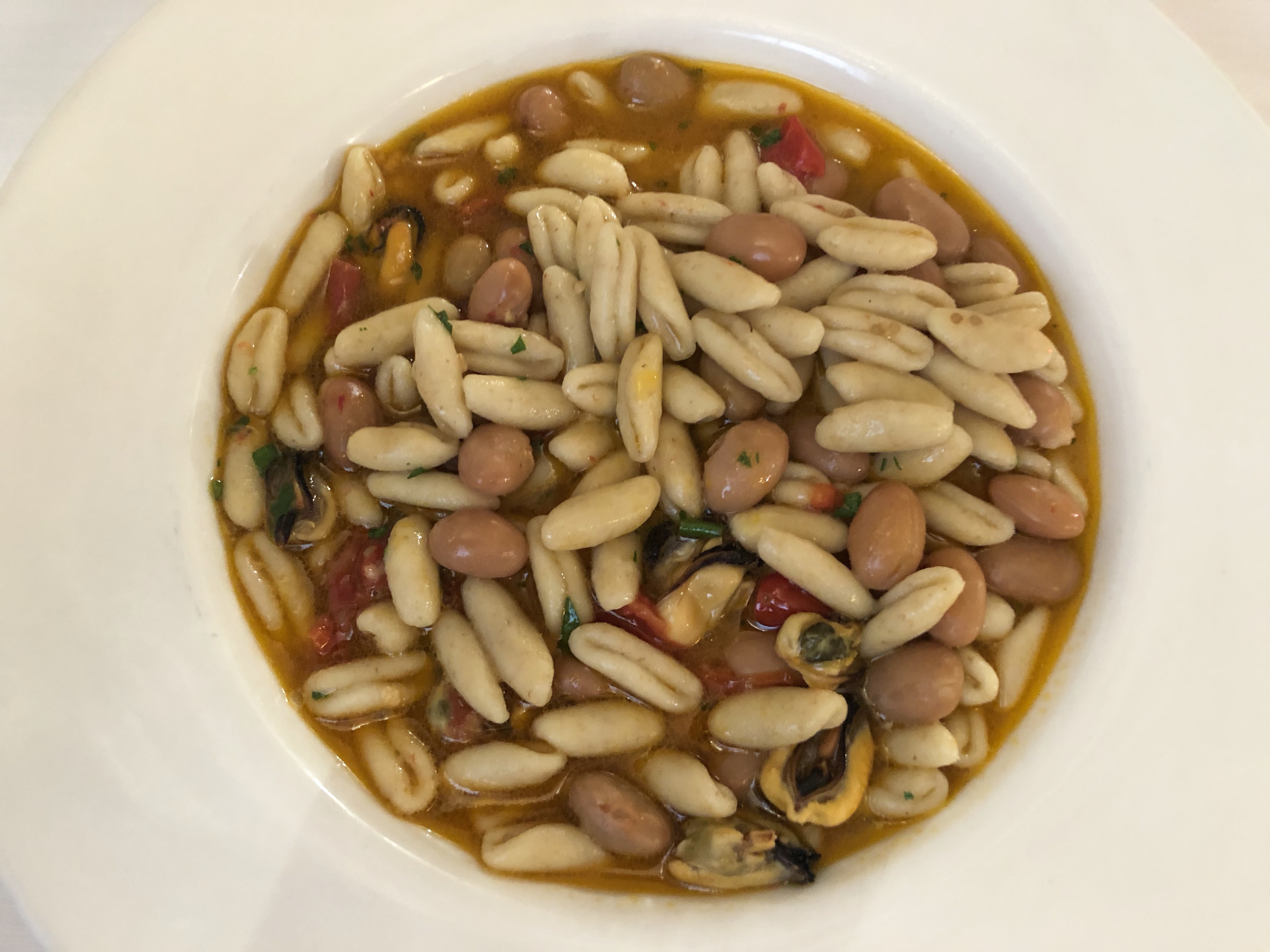

Appetizers, or antipasti, are a big deal in Puglia. Order the house antipasti course and you’ll be presented with a parade of small dishes, often many more than you’d expect. Local cheeses and cured meats, including the local specialty capocollo di Martina Franca, dominate the offerings, but there are often creative dishes inspired by seasonal produce as well. Fave e cicoria is another local specialty, a simple but satisfying dish of fava bean puree topped with sauteed wild chicory greens.


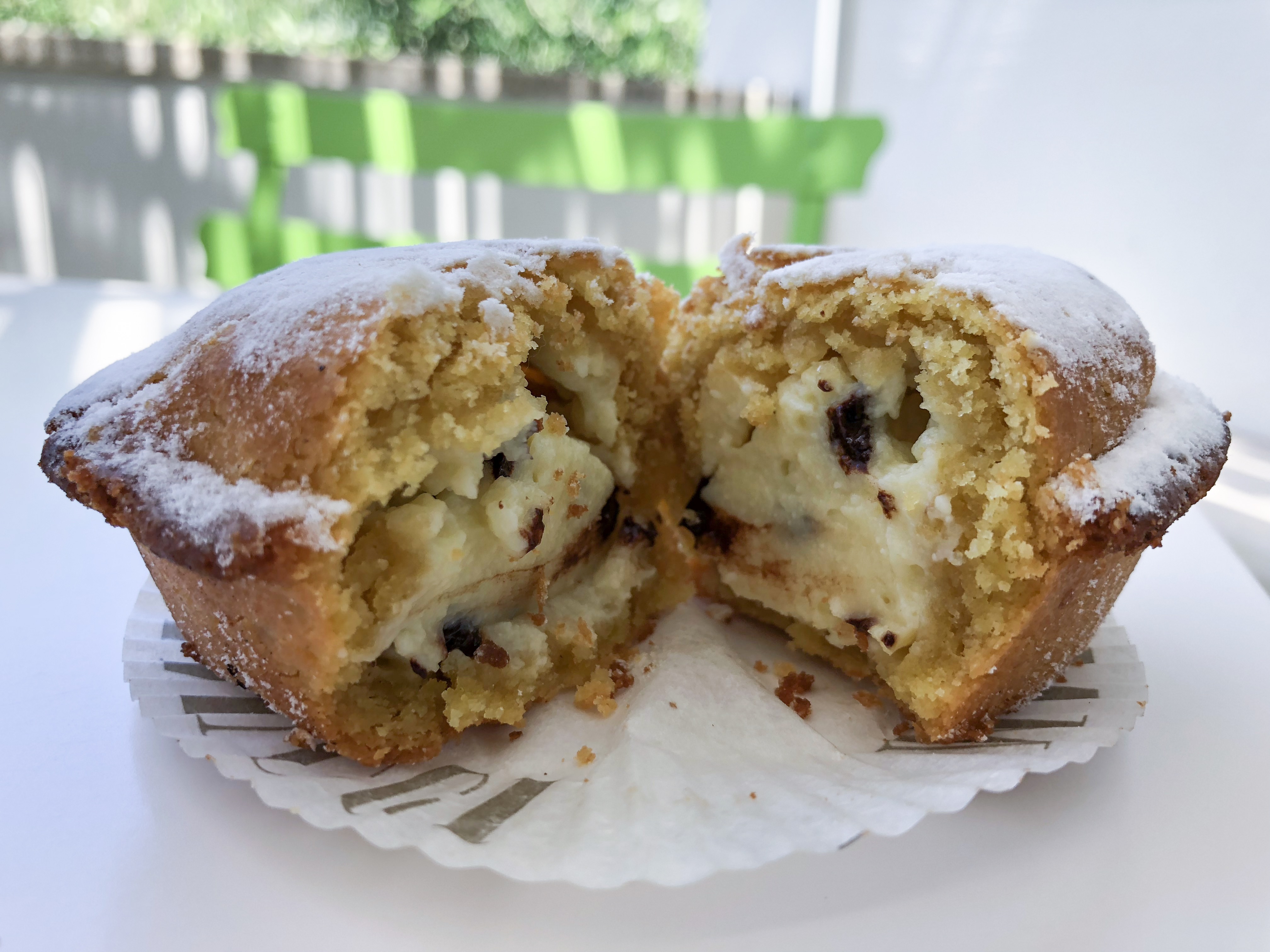
Local pasta dishes are dominated by orecchiette, a round, dimpled shape whose name means “little ears.” Often made from durum wheat semolina, we also found this tasty, slightly chewy pasta made from grano arso, a toasted semolina. The most common toppings are cime di rapa (broccoli rabe or turnip tops) or ragù di braciole e polpette (a hearty tomato-based sauce with stuffed meat rolls and meatballs).
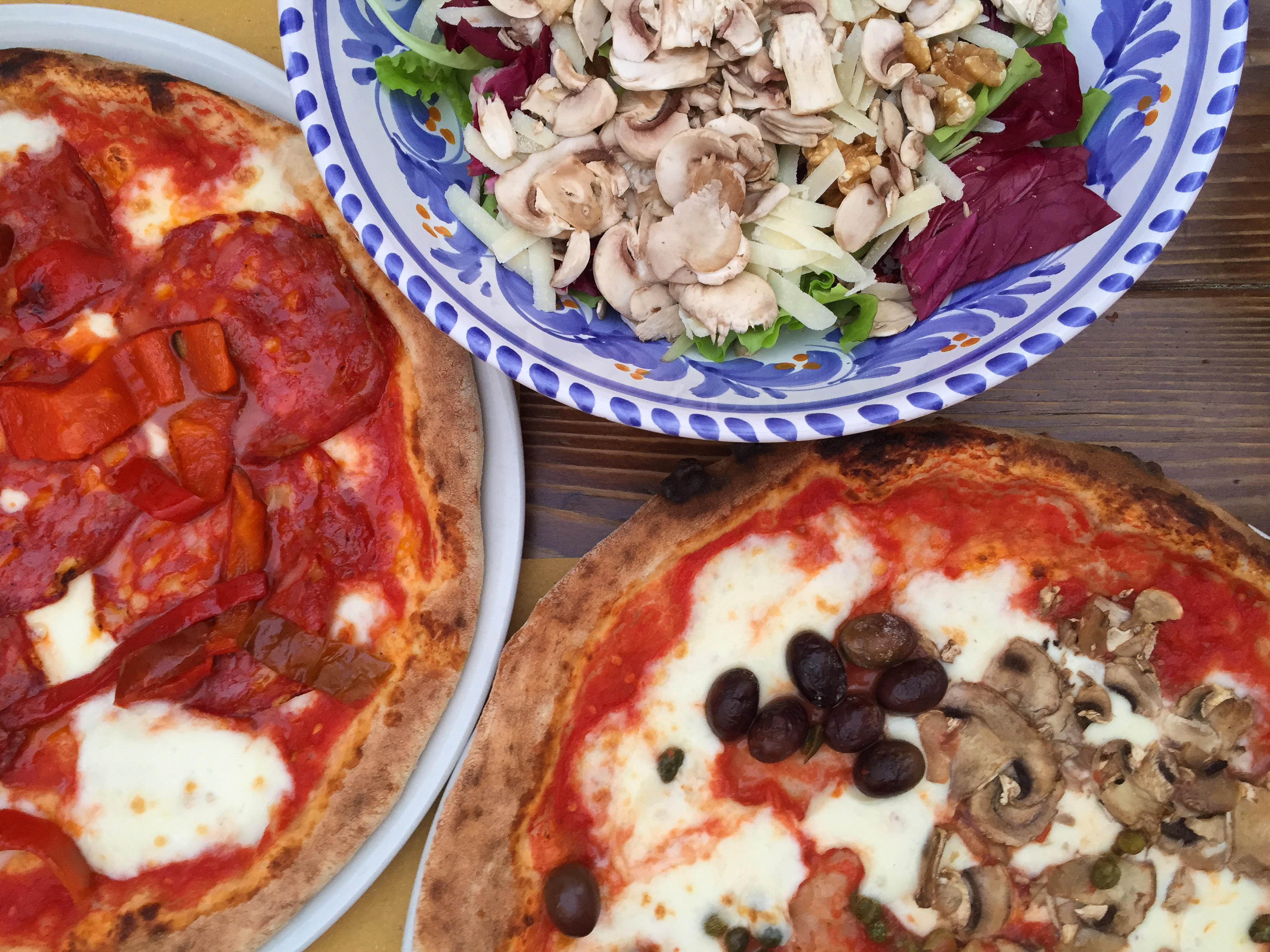
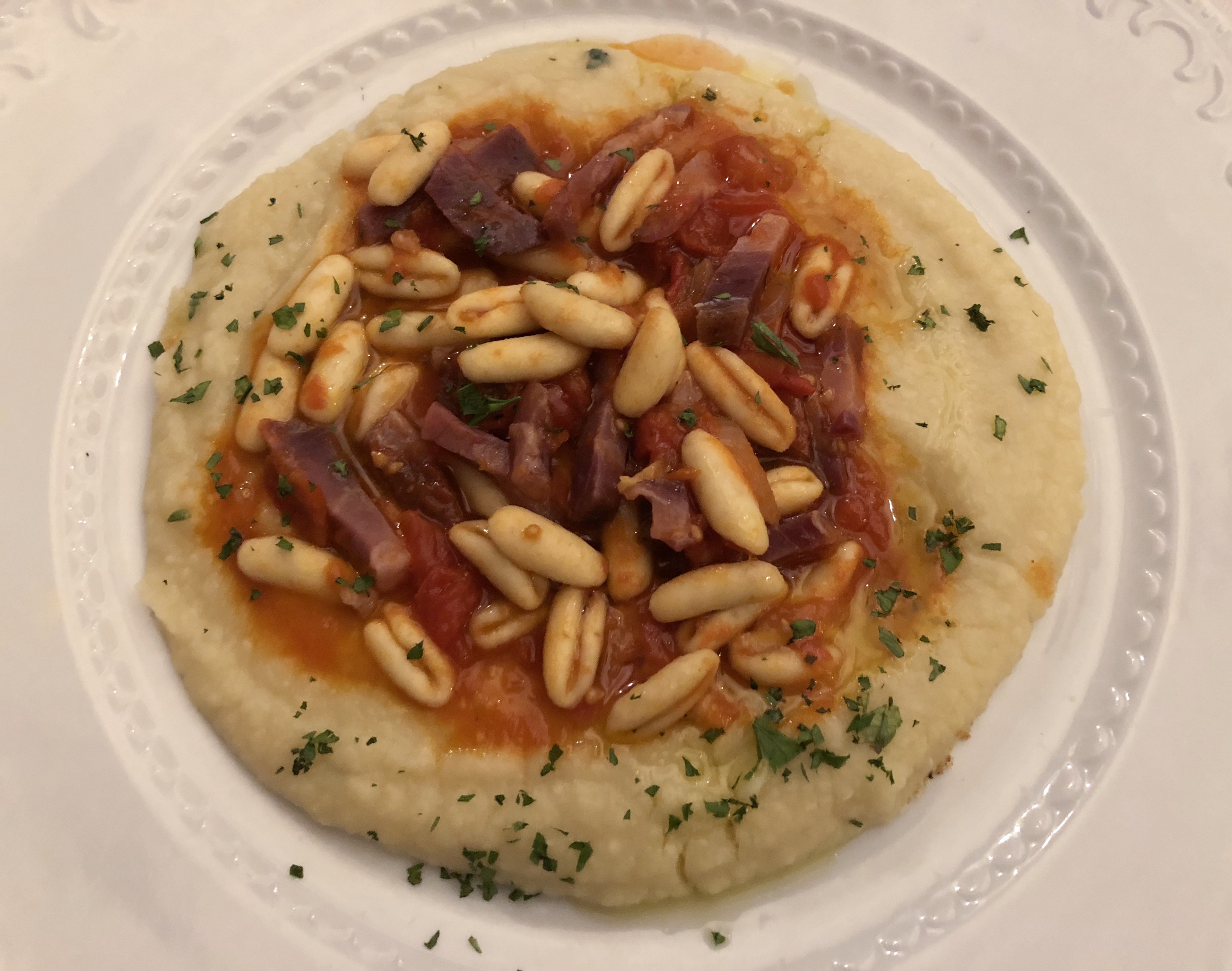
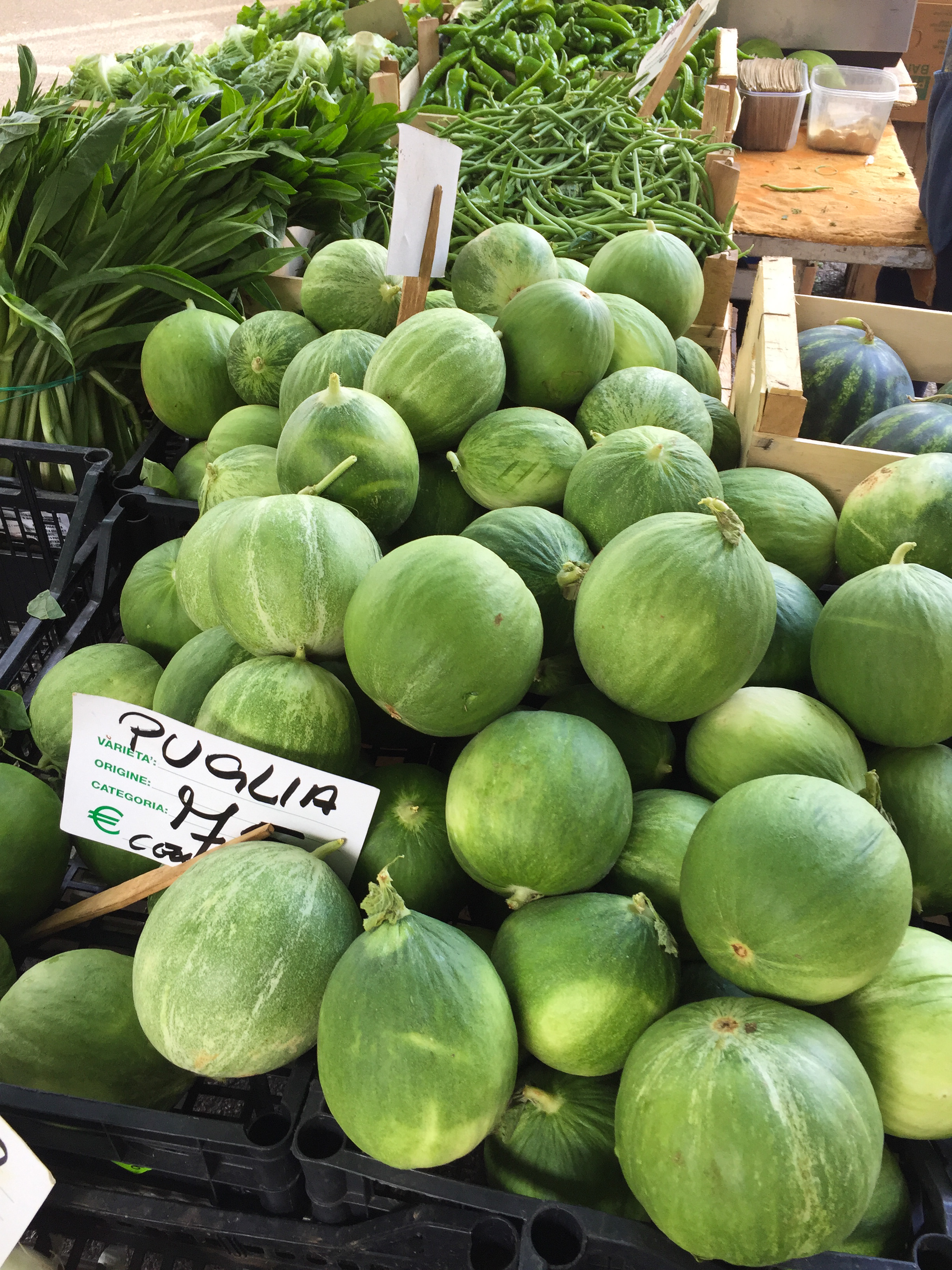
Main courses typically consist of meats and seafood. Meats are almost all locally raised and typically grilled or roasted. Aside from the standard lamb, veal, and chicken, we also found rabbit and donkey on a few menus. Horse meat is a traditional part of the cuisine in Puglia, but we didn’t come across it on any menus. As the Valle d’Itria is close to Puglia’s Adriatic coastline, you will also find a number of fish options which can include prawns, mussels, octopus, lobster, and local favorite sea urchin, all of which could be served in a pasta-based first course or as the star of a main course.
 The weekly markets are the best place to experience the vast variety of local produce. There’s a market happening in at least one town every morning of the week, and we enjoyed our visit to Locorotondo’s Friday market. In late June, local fruit included peaches, apricots, pears, and cherries. The vegetables were just as abundant with beautiful tomatoes, many different kinds of greens, carrots, beets, etc. One surprise in the produce stalls was barattiere or cocomero, which only grows in Puglia. These small, light green spheres have flesh like a honeydew melon, but a flavor more like cucumber but just a tad sweeter. We first sampled it at a simple restaurant, brought to the table in a bowl with carrot sticks before our meal, and we enjoyed it throughout our trip. Of course the markets also feature plenty of vendors selling dried beans, brined olives, baked goods, meats, and cheeses too.
The weekly markets are the best place to experience the vast variety of local produce. There’s a market happening in at least one town every morning of the week, and we enjoyed our visit to Locorotondo’s Friday market. In late June, local fruit included peaches, apricots, pears, and cherries. The vegetables were just as abundant with beautiful tomatoes, many different kinds of greens, carrots, beets, etc. One surprise in the produce stalls was barattiere or cocomero, which only grows in Puglia. These small, light green spheres have flesh like a honeydew melon, but a flavor more like cucumber but just a tad sweeter. We first sampled it at a simple restaurant, brought to the table in a bowl with carrot sticks before our meal, and we enjoyed it throughout our trip. Of course the markets also feature plenty of vendors selling dried beans, brined olives, baked goods, meats, and cheeses too.
Dairy farms are scattered throughout the Valle d’Itria, including a number of masserie, or larger farm estates. In addition to meat, these farms produce delicious local cheeses. Fresh made and still warm ricotta and mozzarella are always a treat, along with creamy local burrata (or smaller burratina) and saltier, aged caciocavallo and cacioricotta. We picked up fresh cheese at Masseria della Madonna dell’Arco, just outside of Locorotondo, on more than one occasion, and they also sold a variety of meat.
WHERE TO STAY
 For some variety, we split our time between the historic center of Locorotondo and the nearby countryside. In Locorotondo, Sotto Le Cummerse is a unique “diffused hotel”; it’s like a cross between the best of Airbnb and a hotel. They have about a dozen recently renovated apartments spread throughout the compact old town. But, like a hotel, there’s a central office, a pretty space where breakfast is served, and daily housekeeping. We really enjoyed our apartment and the convenience of being right in town.
For some variety, we split our time between the historic center of Locorotondo and the nearby countryside. In Locorotondo, Sotto Le Cummerse is a unique “diffused hotel”; it’s like a cross between the best of Airbnb and a hotel. They have about a dozen recently renovated apartments spread throughout the compact old town. But, like a hotel, there’s a central office, a pretty space where breakfast is served, and daily housekeeping. We really enjoyed our apartment and the convenience of being right in town.
 Outside of Locorotondo, Truddhi Casa e Cucina di Puglia gave us the opportunity to spend a few nights inside our own trullo situated right on a small family vineyard in a quiet little hamlet. While not a historic trullo, this newer construction features a complex of basic apartments in varying sizes, all with kitchenettes and outdoor space. The highlight was the property, where you could take a stroll through the vineyard and pick ripe figs right from the tree. There’s also a pool and some playground equipment, making this a popular spot for families. We were welcomed with a bottle of the family’s homemade wine and delicious olive oil. While there were no restaurants within walking distance, both Locorotondo and Cisternino were just a few minutes away by car.
Outside of Locorotondo, Truddhi Casa e Cucina di Puglia gave us the opportunity to spend a few nights inside our own trullo situated right on a small family vineyard in a quiet little hamlet. While not a historic trullo, this newer construction features a complex of basic apartments in varying sizes, all with kitchenettes and outdoor space. The highlight was the property, where you could take a stroll through the vineyard and pick ripe figs right from the tree. There’s also a pool and some playground equipment, making this a popular spot for families. We were welcomed with a bottle of the family’s homemade wine and delicious olive oil. While there were no restaurants within walking distance, both Locorotondo and Cisternino were just a few minutes away by car.
GETTING THERE AND AWAY
Traveling from Amsterdam, we found it easiest to fly to Bari, a small international airport serviced by a number of standard and low-cost airlines. The airport is connected by train directly to downtown Bari and most rental car companies are right in the terminal. There’s also an international airport in Brindisi, but it appears to be even smaller. If traveling to Puglia from within Italy, there are high-speed trains from Milan and Rome to Bari, Monopoli, Ostuni, and Lecce, then some local trains to a few of the smaller towns as an alternative.
Because so much of the charm of the Valle d’Itria lies in the countryside and the variety of small, hilltop towns, we decided that renting a car would be the best way to get around. While the car helped us make the most of our time, driving in Puglia has its challenges. Roads are generally in much poorer condition than in other European regions, often quite bumpy and with numerous potholes. Smaller country roads are very narrow, though local drivers are accustomed to that. Posted speed limits are generally low but are widely ignored.
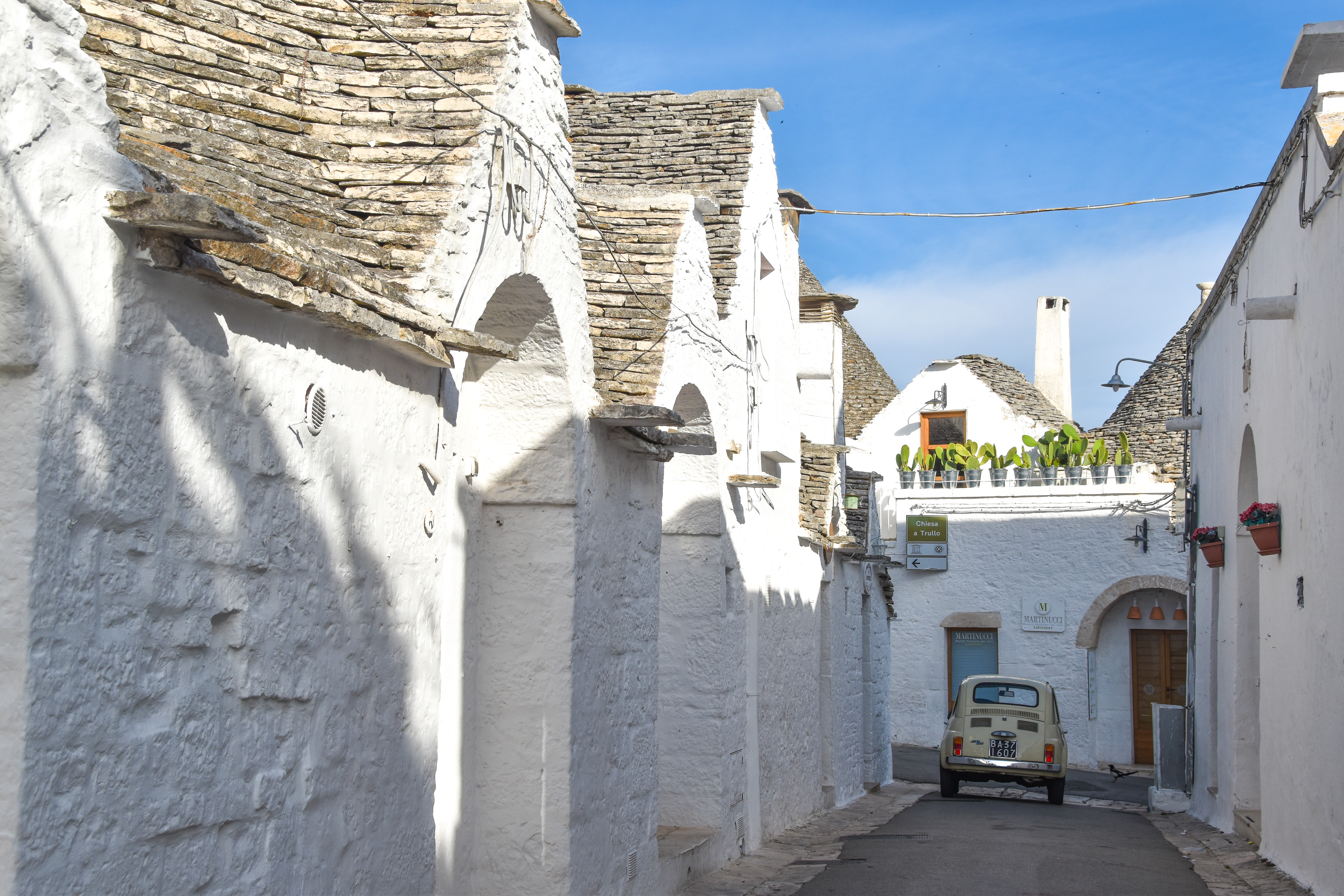 When visiting the hilltop towns, it’s good to have a plan for parking. We could often identify a public parcheggio on Google Maps before driving there, searching just outside the historic center. The general rule is that parking spots, whether on the street or in a lot, are free when they have white lines and require payment when there are blue lines. For blue-lined spots, there’s generally a parking ticket machine nearby where you enter your license plate number, pay in advance, and get a ticket to display on your dashboard. Unlike speed limits, parking regulations are strictly enforced. While most machines accept card payments, it’s a good idea to keep some euro coins handy to pay as well. Avoid any parking spots with yellow lines as those are restricted. Keep in mind that a ZTL, or zona di traffico limitato, is off-limits and you’ll get a ticket if you drive into those areas.
When visiting the hilltop towns, it’s good to have a plan for parking. We could often identify a public parcheggio on Google Maps before driving there, searching just outside the historic center. The general rule is that parking spots, whether on the street or in a lot, are free when they have white lines and require payment when there are blue lines. For blue-lined spots, there’s generally a parking ticket machine nearby where you enter your license plate number, pay in advance, and get a ticket to display on your dashboard. Unlike speed limits, parking regulations are strictly enforced. While most machines accept card payments, it’s a good idea to keep some euro coins handy to pay as well. Avoid any parking spots with yellow lines as those are restricted. Keep in mind that a ZTL, or zona di traffico limitato, is off-limits and you’ll get a ticket if you drive into those areas.
Our biggest tip for driving in Puglia is to go with a small car. For just the two of us, a tiny Fiat 500 was perfect; the small size made navigating narrow roads and tiny parking spots easier, but we could still fit our luggage in.
We had a really wonderful trip to Puglia and it lived up to all of our expectations; the scenery, people, food, and sights were all fantastic. While it was our first visit to this beautiful part of Italy, we are certain it won’t be our last.

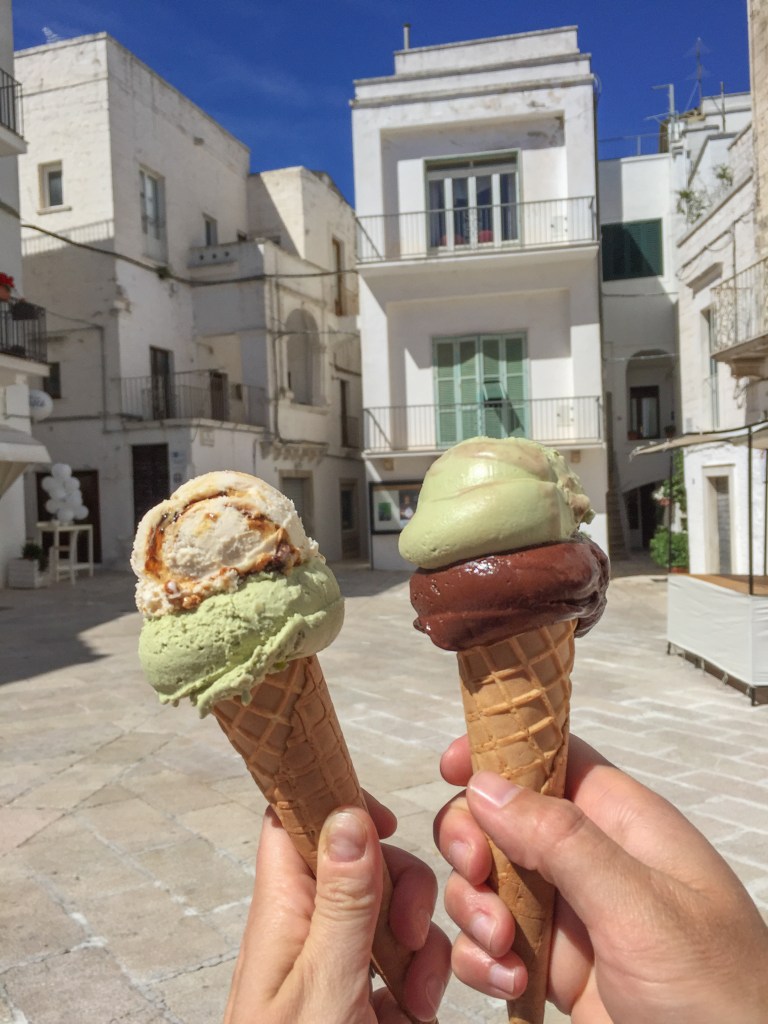
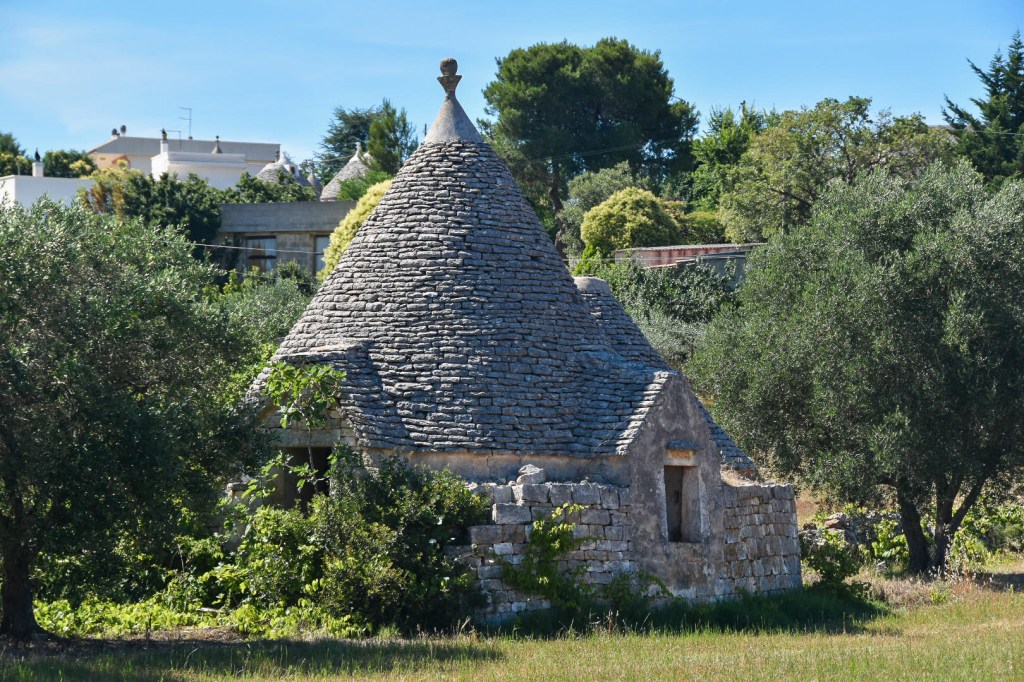







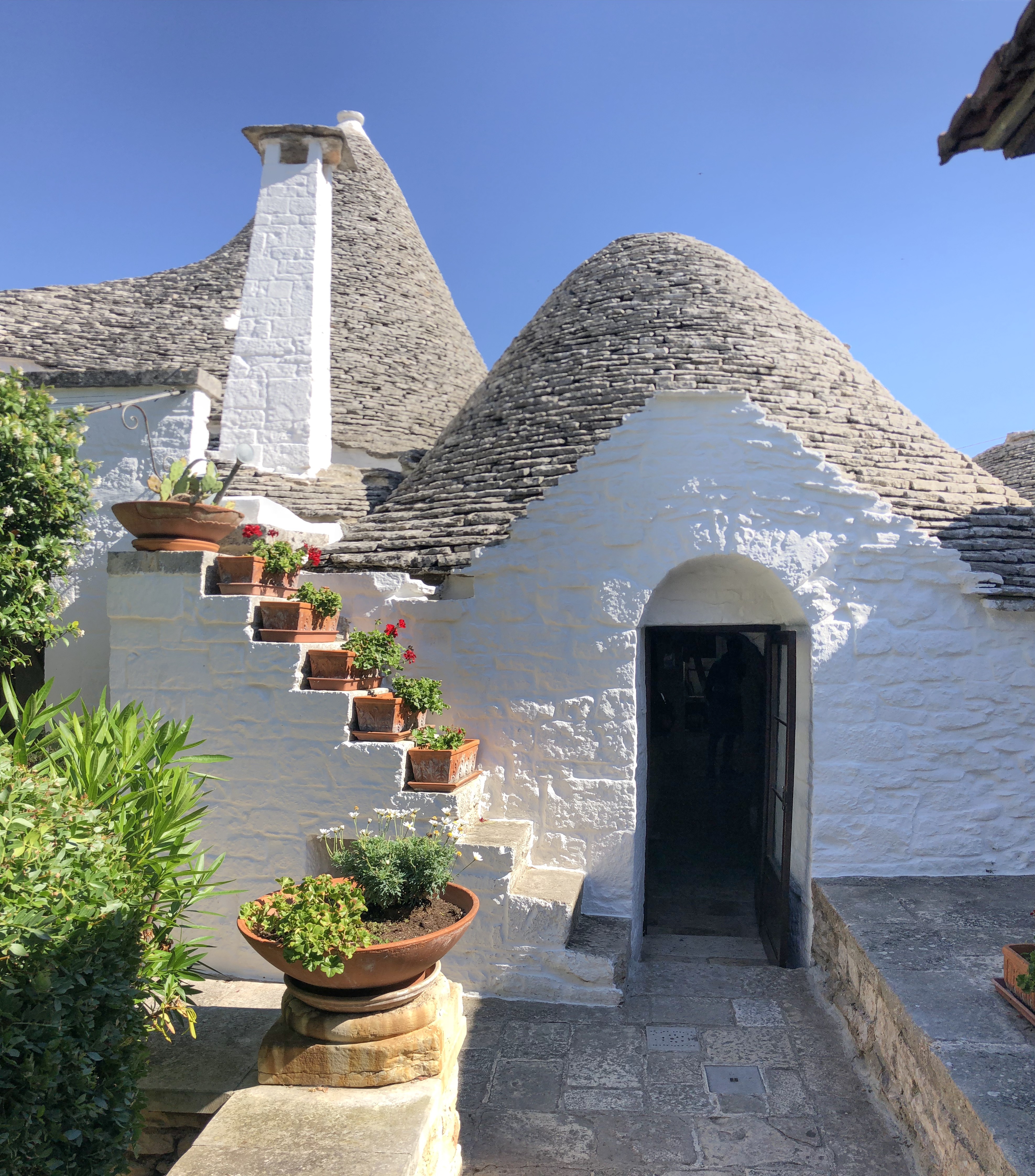
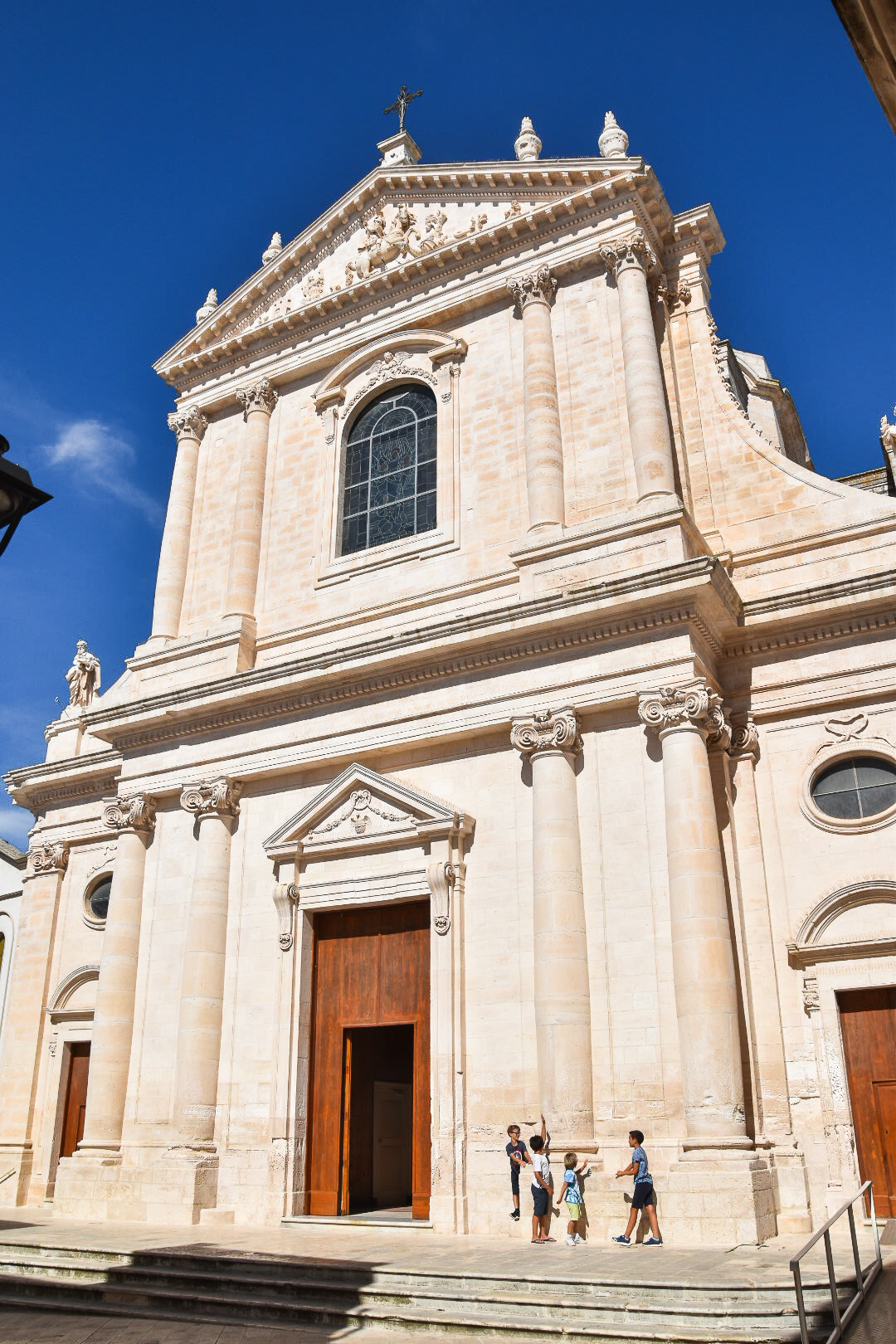


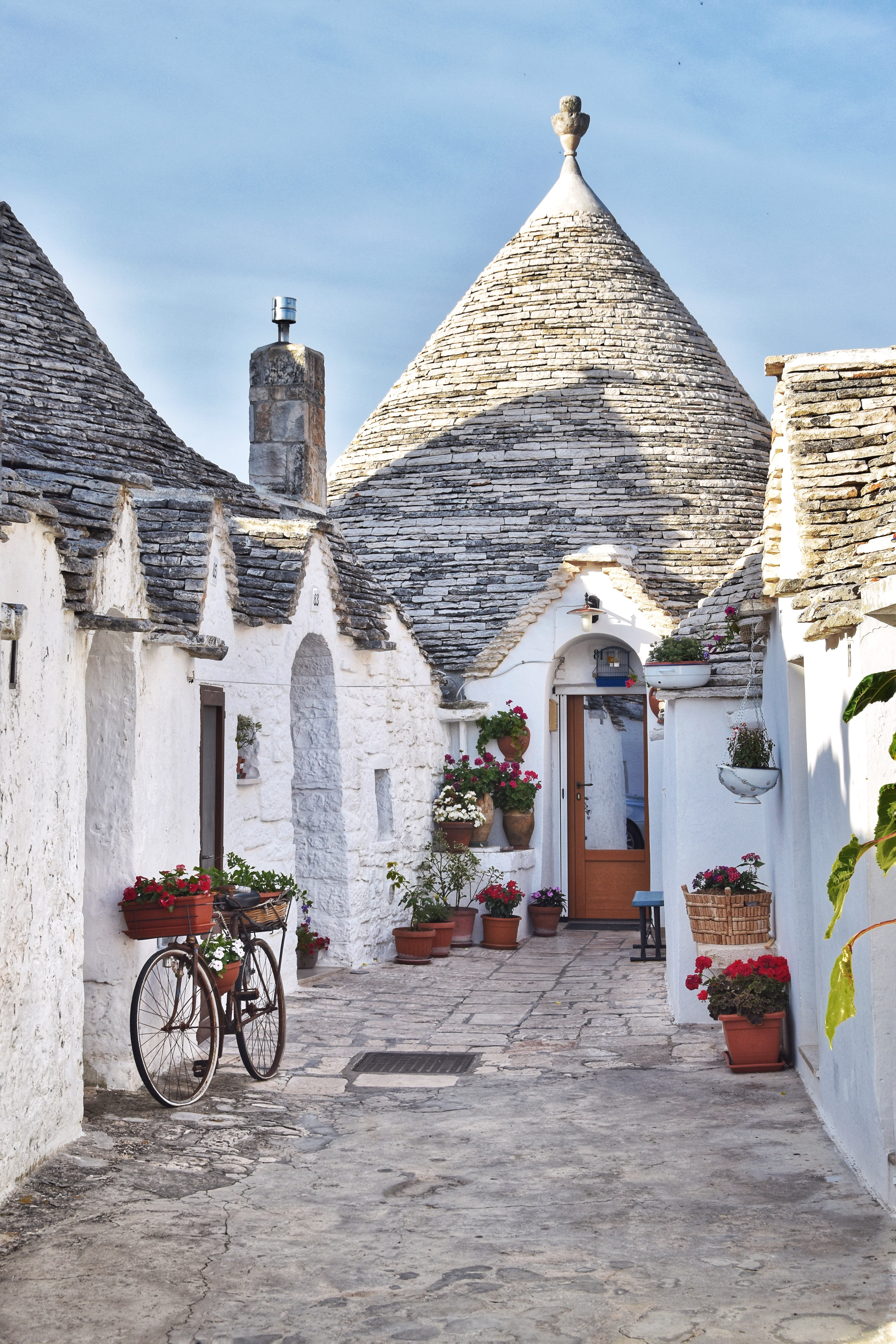





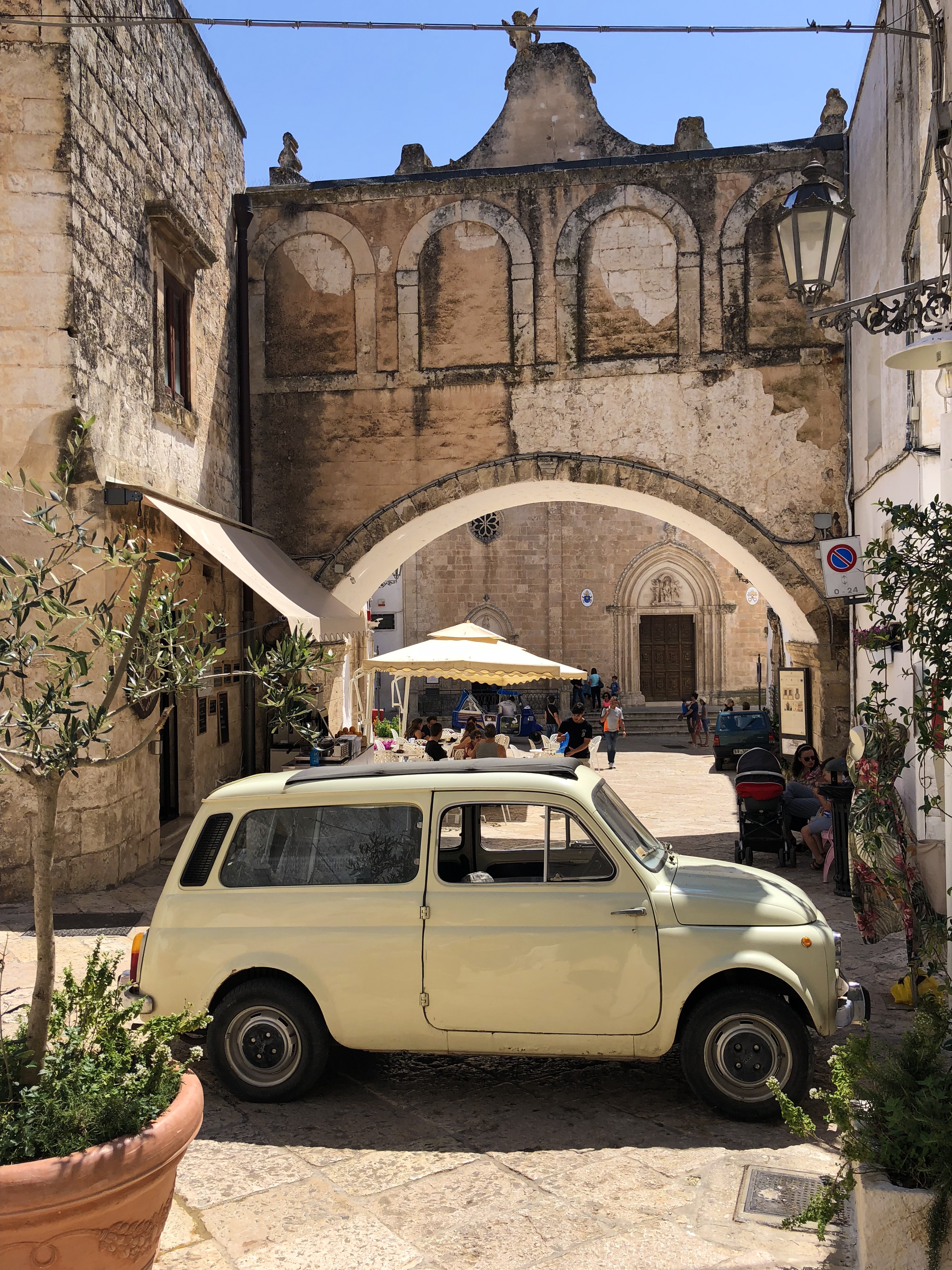
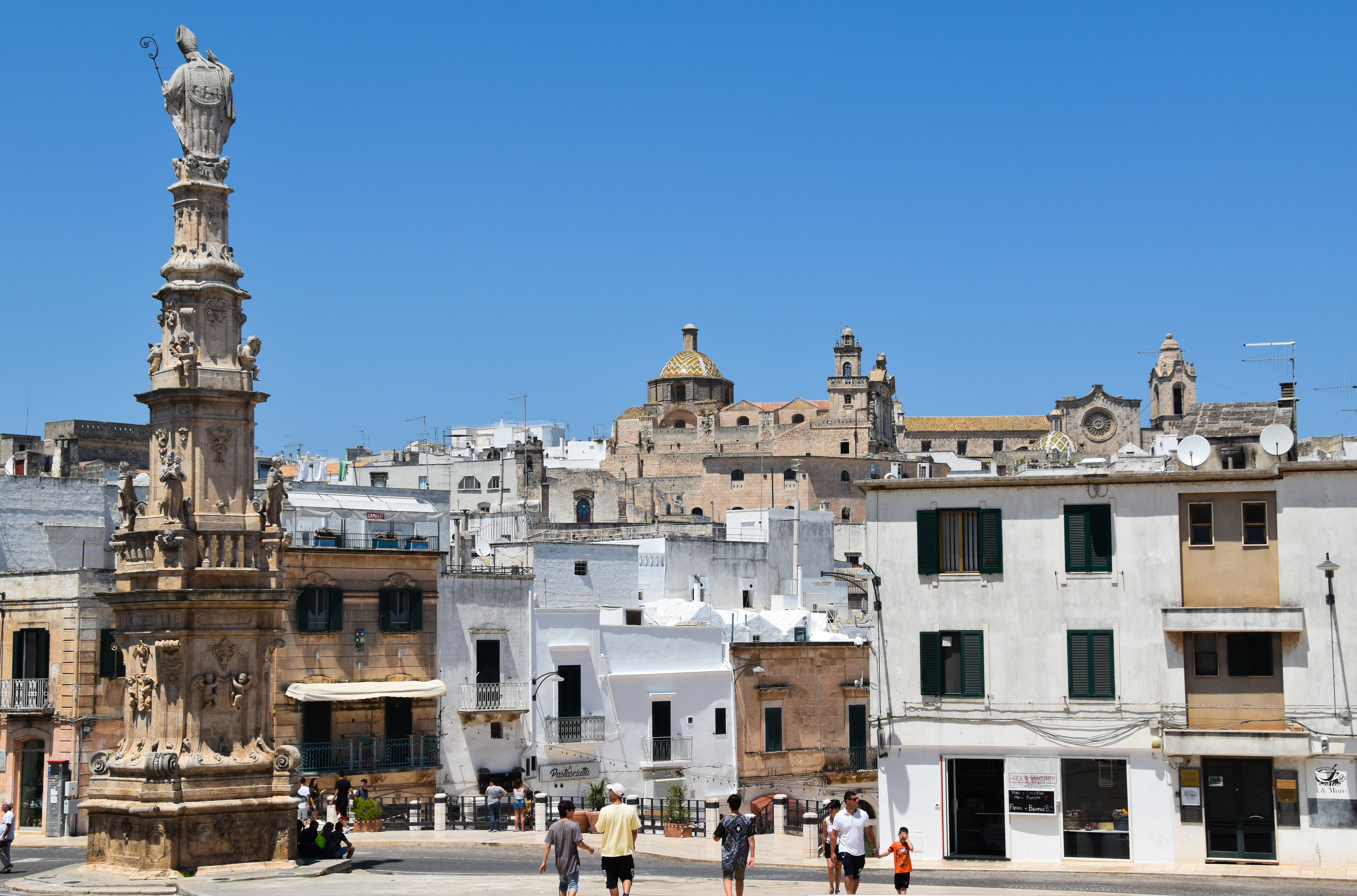



Let me know when you organize your first group tour to Italy, I’m ready to go.
LikeLiked by 1 person
Will do! We know we won’t have to slow our normal pace down for you!
LikeLike
Niiiice… If the skies were all blue as in your photos, you were lucky, but so am I, because it gave those pix wonderful light!
LikeLiked by 1 person
We did have a couple brief periods of rain, but overall we were very lucky with nice weather! We mostly had temps in the 70s too. When it hit 94 the day of our departure, we realized just how lucky we had been throughout the week!
LikeLike
Lovely write up and beautiful photos. Has given me lots of ideas for my next trip. Thank you
LikeLike
What a gorgeous place and fabulous review guys. Italy has long been on my travel list. Perhaps I need to delay for a bit but intend to experience the country eventually, as things settle down. Awesome job on this post.
Ryan
LikeLike
Thank you!
LikeLike